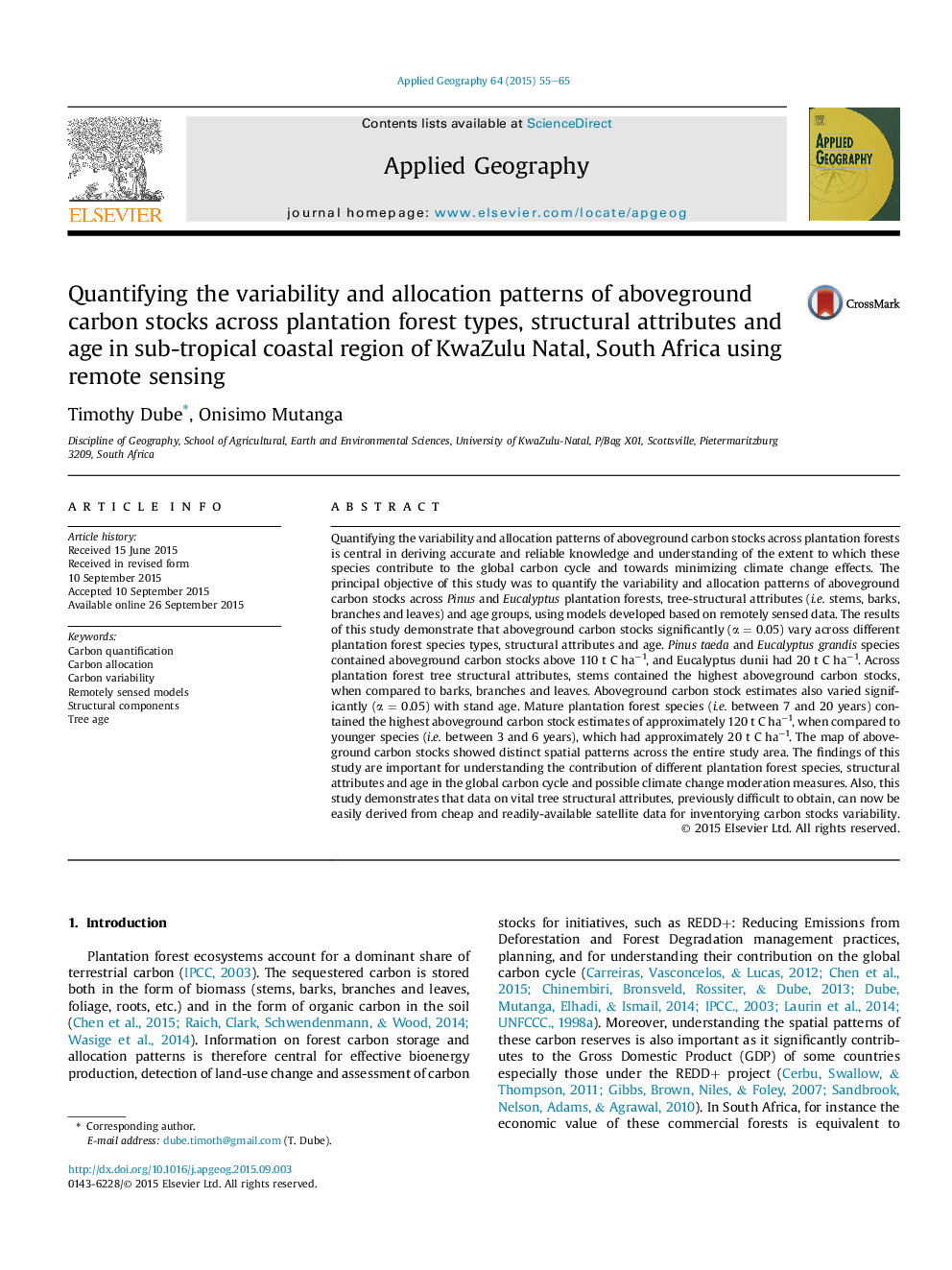| کد مقاله | کد نشریه | سال انتشار | مقاله انگلیسی | نسخه تمام متن |
|---|---|---|---|---|
| 83196 | 158695 | 2015 | 11 صفحه PDF | دانلود رایگان |

• Variability and allocation patterns of aboveground carbon stocks.
• Aboveground carbon stock models developed based on remotely sensed data.
• Spatial maps of plantation forest aboveground carbon stocks.
• The effect of tree age on aboveground carbon stocks.
• The role of plantation forest on the global carbon cycle.
Quantifying the variability and allocation patterns of aboveground carbon stocks across plantation forests is central in deriving accurate and reliable knowledge and understanding of the extent to which these species contribute to the global carbon cycle and towards minimizing climate change effects. The principal objective of this study was to quantify the variability and allocation patterns of aboveground carbon stocks across Pinus and Eucalyptus plantation forests, tree-structural attributes (i.e. stems, barks, branches and leaves) and age groups, using models developed based on remotely sensed data. The results of this study demonstrate that aboveground carbon stocks significantly (α = 0.05) vary across different plantation forest species types, structural attributes and age. Pinus taeda and Eucalyptus grandis species contained aboveground carbon stocks above 110 t C ha−1, and Eucalyptus dunii had 20 t C ha−1. Across plantation forest tree structural attributes, stems contained the highest aboveground carbon stocks, when compared to barks, branches and leaves. Aboveground carbon stock estimates also varied significantly (α = 0.05) with stand age. Mature plantation forest species (i.e. between 7 and 20 years) contained the highest aboveground carbon stock estimates of approximately 120 t C ha−1, when compared to younger species (i.e. between 3 and 6 years), which had approximately 20 t C ha−1. The map of aboveground carbon stocks showed distinct spatial patterns across the entire study area. The findings of this study are important for understanding the contribution of different plantation forest species, structural attributes and age in the global carbon cycle and possible climate change moderation measures. Also, this study demonstrates that data on vital tree structural attributes, previously difficult to obtain, can now be easily derived from cheap and readily-available satellite data for inventorying carbon stocks variability.
Journal: Applied Geography - Volume 64, October 2015, Pages 55–65